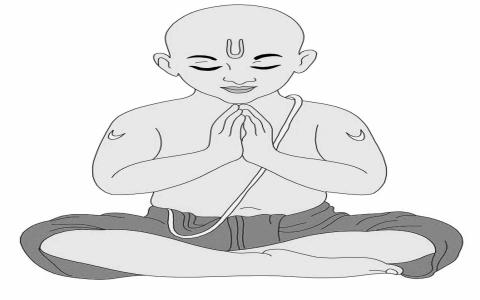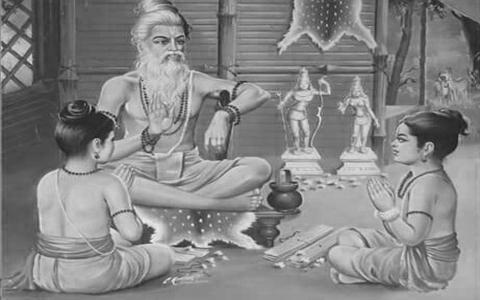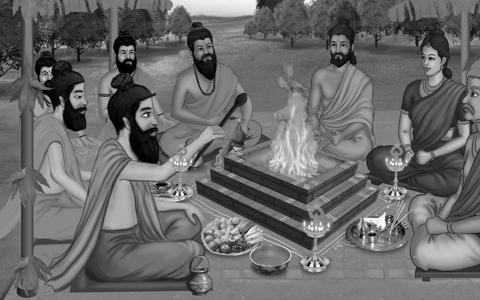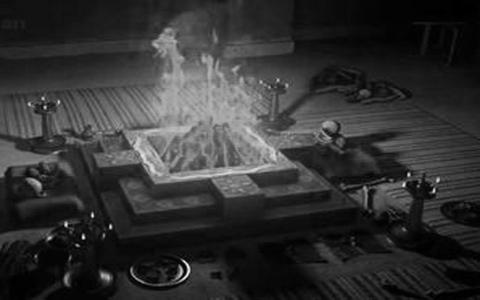
Education and Code of Conduct[1]
The study of Veda did not merely consist in learning the mantras by heart. The students had to also understand the meaning. Many ancient thinkers have condemned the blind memorization of the Vedic mantras and have emphasized on learning the meaning (and meditating upon it). In spite of this, however, it appears that for several centuries the Veda was only committed to memory and most people who learned the Vedas...

The daily worship of the sun is called Sandhyā.[1] The word ‘sandhyā’ literally means ‘twilight’ but also indicates the prayer performed during the morning and evening twilight.[2] This act of adoration to the sun is generally styled ‘sandhyopāsana’ or ‘sandhyāvandana’ or simply ‘sandhyā.’[3] The word ‘sandhyā’ can also mean ‘the junction between night and day (i.e., dawn)’ or ‘the junction between day and night (i.e., dusk).’ The former is...

Brahmacāri-dharmāḥ – Rules and Regulations of Student-hood[1]
After the brahmacārī goes around the fire altar and makes offerings into it, the ācārya holds him and lays out the rules of student-hood by reciting the verse, “You are a student. Take water. Maintain silence. Put the samidh in the agni…”[2] The teacher declares to the student, “Sip water. Water is, doubtless, the divine nectar of immortality! Sip the divine nectar! Do your work. Work...

Daṇḍa – The Staff [1]
The ācārya gave a daṇḍa (staff, stick) to the student, who accepted it by reciting the verse: “My daṇḍa fell down to the ground and I pick it up, for the sake of long life, to adhere to the path of brahman, and to begin student-hood.”[2] The daṇḍa represented control over the mind, speech, and body.
Since the life of a student was envisaged as a grand yajña, it was prescribed that the boy must hold the daṇḍa by reciting a...

After tying the mekhalā, the boy was invested with the yajñopavīta (sacred thread).[1] While the yajñopavīta as a ‘sacred thread’ was largely unknown in ancient times[2], it became the focus of the upanayana saṃskāra in later years.[3] In later times, the young vaṭu was given the yajñopavīta and made to recite the well-known mantra, “The yajñopavīta is supremely sacred.”[4]
The yajñopavīta is prepared from threads that are spun by an unmarried...

Preparations for the Upanayana[1]
A śālā (canopy, pavilion) was built under which the saṃskāra would be conducted.[2]
On the eve of the upanayana, Purāṇic performances took place. Gaṇeśa was invoked and the various goddesses Śrī, Lakṣmī, Dhṛtī, Medhā, Puṣṭi, Śraddhā, and Sarasvatī were worshipped.[3] Often this is accompanied by the recitation of the udaka-śānti mantras.
In some provinces, there is a custom of smearing the vaṭu with a yellow...

The Right Age for Conducting Upanayana[1]
There are several varying rules and prescriptions about the age of the boy who is to undergo the upanayana (the boy is referred to as the ‘vaṭu’). What is interesting to note is that the age was counted from conception.[2] From the earliest times we see in ancient India the notion that the age of a child must be counted.
It is prescribed for a brāhmaṇa boy to have his upanayana at age 8 (and not later...

Most of our ancient thinkers were of the opinion that only the male members of the brāhmaṇa, kṣatriya, and vaiśya varṇas were eligible to study the Vedas.[1] And since the upanayana saṃskāra was primarily meant as an entry to the study of the Vedas, it was not applicable to women of all varṇas and to śūdras.[2]
There are, however, exceptions to this rule. For instance, one of the ancient teachers, Ācārya Bādarī mentions[3] that everyone,...

It was in the Sūtra period that the upanayana saṃskāra seems to have been fully established.[1] Most of the details of the ceremony are laid out in the gṛhya-sūtras. The Dharma-sūtras and Smṛtis have nothing new to say about the ritualistic aspects apart from what has already been said earlier; they primarily develop the social side of the saṃskāra. It was also perhaps during this period that the Upanayana became compulsory for men from the...

Upanayana in the Saṃhitās
Some of the characteristics of the upanayana described in the gṛhya-sūtras are seen in the Ṛgveda-saṃhitā itself.[1] The sacrificial post (yūpa-stambha) is praised as a young person – “Here comes the youth, well-dressed and encircled (the boy by his mekhalā and the post by its rasana); he, when born, attains eminence; ṛṣis, full of devotion to the deities in their hearts and entertaining happy thoughts, raise him up.”[2...
